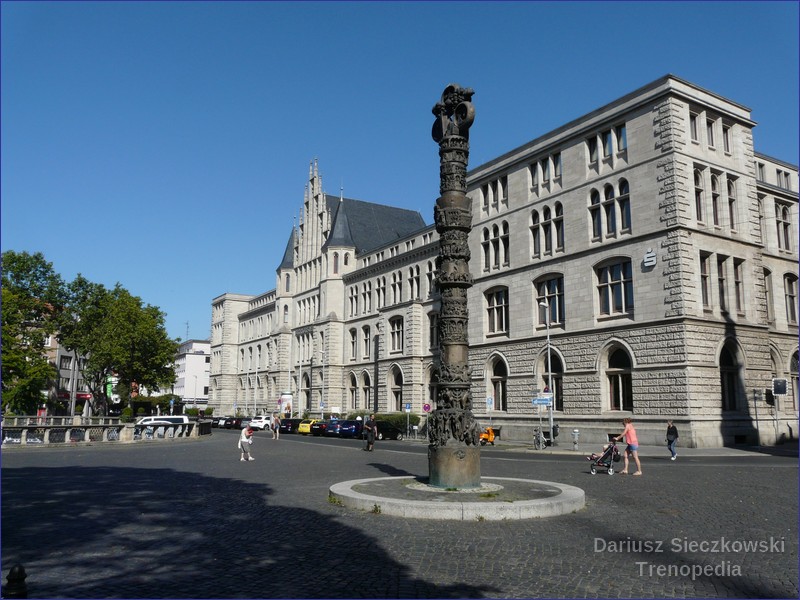Hanover is a large city, the capital of Lower Saxony, and an important railway junction. Most historical buildings were destroyed during WWII. Some were rebuilt, but the city doesn’t particularly impress. The city is a perfect starting point for day trips from Hanover by train to many places in the entire Germany. There are many long-distance trains, but in the article I’ve listed only the most important destinations that can be reached by regional trains from Hanover within two hours (R, RE and regional operators). In some cases, a transfer is necessary. In the future, I plan to expand this article with other interesting places.
Direction: Bremen
Verden an der Aller (optional) – a small town known for horse breeding, as highlighted by the German Horse Museum (Deutsches Pferdemuseum e.V.). The small town center has well-preserved buildings, and visitors can explore the Verden History Museum. The town used to be the seat of bishops, so several religious monuments have been preserved – the cathedral with its large steep roof, St. Andrew’s Church, and St. John’s Church.
Bremen – a large city on the Weser River, founded in 787. From the beautiful train station, it’s a 10-minute walk to the Old Town, or you can take a tram. The main landmarks are located around a large, irregularly shaped market square. The majestic town hall (Bremer Rathaus) dates from the 15th century and was rebuilt in the Weser Renaissance style from 1609–1612. In front stands a 12-meter statue of the legendary knight Roland. St. Peter’s Cathedral towers over the Old Town, and one of the city’s symbols is the Statue of the Bremen Town Musicians, inspired by the Brothers Grimm fairytale. Notable buildings include the richly decorated Guild House (Schütting), built in Dutch Mannerist style, once used by local merchants. The oldest district, Schnoor, features a maze of streets lined with 15th–17th-century timber-framed buildings. Among the many museums is the Focke Museum, showcasing Bremen’s history and culture from the Middle Ages to modern times. Also far from the Old Town is Universum Bremen, a science center about Earth and space. Right next to the train station is the Overseas Museum (founded in 1891), focused on the cultures of overseas countries.

Direction Hamburg
Celle – a town of about seventy thousand residents. The Old Town lies near a castle that was rebuilt in 1583 as a residence. Part of the castle is a Gothic chapel remodeled in the Mannerist style by Martin de Vos, who painted 76 works inside. The center features beautiful half-timbered houses. In recent years, so-called “Talking Lanterns” have been installed. Worth visiting are the Art Museum and the Garrison Museum located in former barracks. The walk from the train station to the city center is about 2 kilometers. During my visit, I found no public restrooms at the station or along the way (which I finally found one at the castle yard).
Uelzen (optional) – train enthusiasts should stop here for at least a short visit to see the fairytale-like train station. The interior also reflects a whimsical, storybook style. The Old Town, located just a 3-minute walk from the station, consists of a few streets with attractive, well-maintained buildings.
Lüneburg – a place definitely worth visiting, historically known for salt mining. Once a Hanseatic city, it was among the wealthiest cities in Germany during its heyday. The old town is quite charming. The main attraction is the town hall; if possible, be sure to see the Town Hall Chamber with stained glass and frescoes of the “Last Judgment” and the “Council Hall.” On Am Sande Square stands the Gothic Church of St. John with a 108-meter-high western tower leaning 2 meters off vertical. Also worth seeing is St. Nicholas’ Church. The walk from the train station to the city center takes about 5 minutes, and the center boasts lovely architecture, picturesque streets, the Lüneburg Museum, and the Salt Museum. Nearby are the Lüneburg Heath and Südheide nature parks with vast heathlands. Highly recommended.
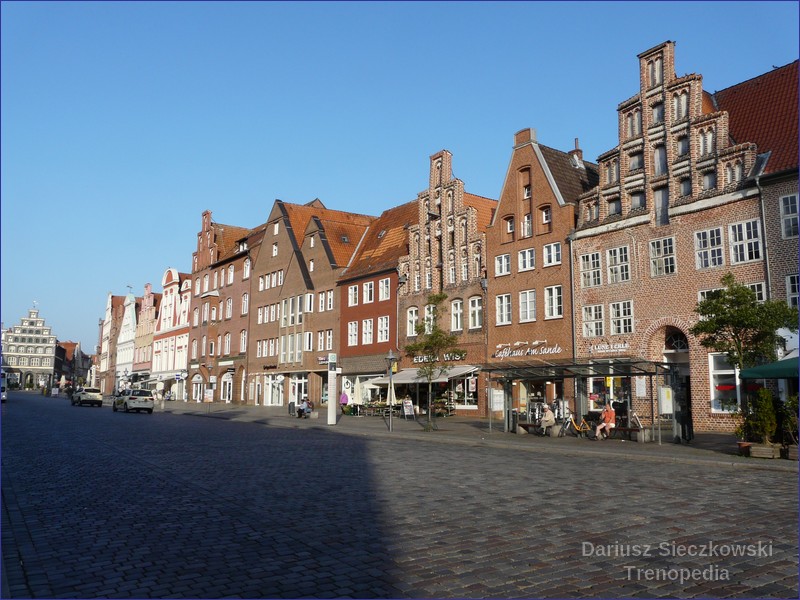
Hamburg – the second-largest city in Germany. The city’s districts vary architecturally, and its landmarks and attractions are scattered throughout. In the city center, near the main train station, several interesting monuments can be found – the neo-Renaissance town hall with richly decorated halls, and the churches of St. Peter and St. James. The modern Elbphilharmonie building is also noteworthy; a viewing platform was created halfway up. Other central attractions include the world’s largest model railway (Miniatur Wunderland) and the Art Museum. Speicherstadt, a district of warehouses and museums (such as the Prototype Car Museum), stretches along the canals. Also of interest are the Treppenviertel district, once a separate fishing village, and the Kontorhaus District with the iconic Chilehaus (1921–1924), a symbol of expressionist architecture.
Day trips from Hanover by train – Direction: Paderborn
Hameln – a perfect spot for a few hours trip from Hanover. The city is world-famous due to the fairy tale of the Pied Piper written by the Brothers Grimm. Its charming center features cobbled streets and half-timbered houses, making it one of the prettiest towns in Lower Saxony. The standout building is the 17th-century Pied Piper’s House (Rattenfängerhaus), built in the Weser Renaissance style.
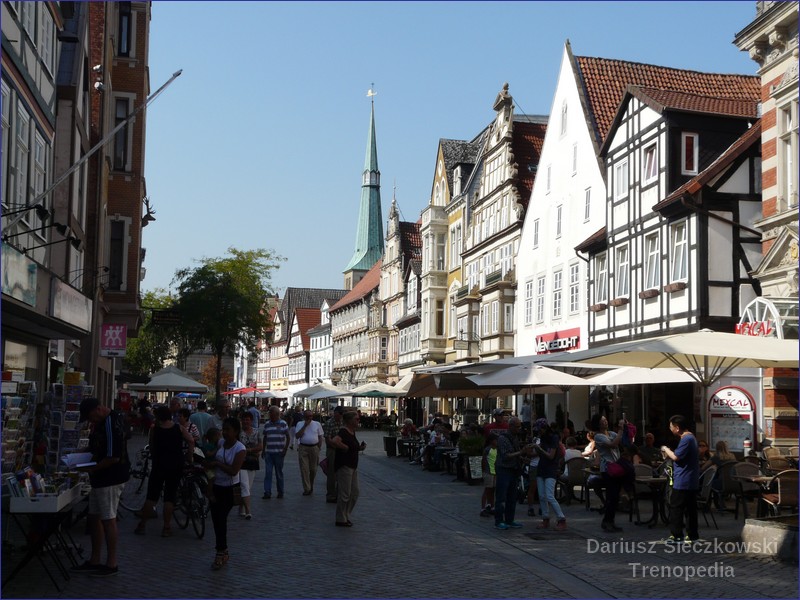
Bad Pyrmont (optional) – a pleasant spa town with a mineral water pump room, a spa park, and a baroque castle (formerly part of the town’s fortifications), now housing the Museum of Municipal and Spa History.
Altenbeken (optional) – an important railway junction. Railway enthusiasts should see the massive railway viaduct built between 1851–1853 – there’s a viewing terrace with views of passing trains. A steam locomotive monument is located in the town center. Several long hiking trails are marked around the town.
Paderborn (optional) – a medium-sized city with average architecture. During World War II, 85% of the city was destroyed by bombing, so the main historical sites are the cathedral and the town hall. Outside the center is the interesting Heinz Nixdorf MuseumsForum, dedicated to the history of computers, and on the outskirts lies the beautiful Neuhaus Castle, which can be reached via a riverside path along the Pader river or by bus (5 km from the main station). The castle is surrounded by gardens, beyond which an open-air stage was built.
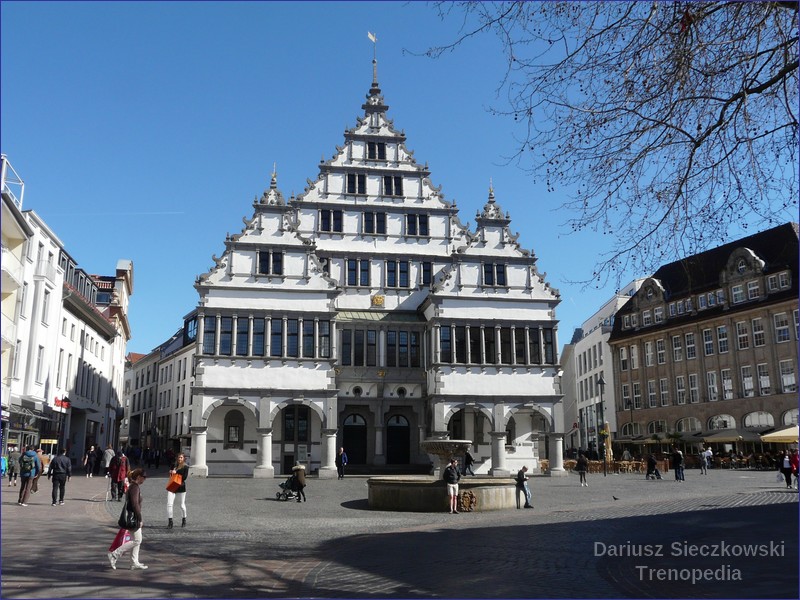
Direction: Bad Harzburg
Hildesheim – a city almost entirely destroyed during World War II. Some of the historic center was rebuilt. The most attractive area in the city center is the main market square (Marktplatz), with the reconstructed 1529 half-timbered house (Knochenhaueramtshaus) and the town hall. St. Andrew’s Church was also rebuilt after the war, and St. Michael’s Church, in the Ottonian style, is worth seeing. The Roemer and Pelizaeus Museum holds one of the most valuable collections of ancient Egyptian artifacts in Europe. Other sacred monuments include St. Mary’s Cathedral, St. Godehard’s Church, and St. Maurice’s Church. On the outskirts, families with children can visit a small animal park.

Derneburg (optional) – a little-known location to foreigners, 15 km from Hildesheim, with a castle serving as a contemporary art museum and the Laves Cultural Trail passing through the castle park. Attractions include a pyramid serving as a mausoleum for one of the castle’s former owners, old fishermen’s houses built from sandstone blocks, and a war cemetery.
Goslar – one of the most beautiful cities in Germany. A must-see when touring the region. Located at the foot of the Harz Mountains, the town impresses with its half-timbered buildings in the center. The top attractions include the town hall, the Imperial Palace (Kaiserpfalz) – a stone imperial palace from 1005–1015 rebuilt in the 19th century – and the silver mine in Rammelsberg, which was the source of Goslar’s wealth. Parts of the medieval city fortifications remain. Museums include the Museum of Modern Art, the Goslar Museum, the Siemens House (a half-timbered house once owned by the Siemens family), and a small Pewter Figurine Museum. The train station is not particularly inviting.
Bad Harzburg (optional) – a small spa town located on the edge of Harz National Park, at the border of the federal states of Lower Saxony and Saxony-Anhalt. A good place for walks and hikes on tourist trails. Attractions include the ruins of Harzburg Castle, the Sachsenbrunnen spring in nearby forests, and a Lutheran church.
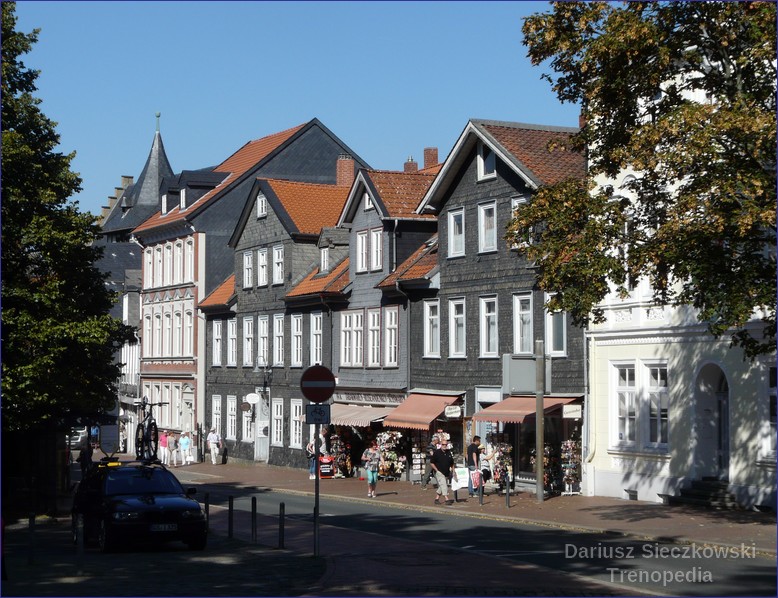
Direction: Göttingen
Göttingen – one of the most famous university towns in Germany. A colorful, vibrant city full of student life. The heart of Göttingen is the market square with the stone-faced town hall and the Gänseliesel fountain in front of it, depicting the Goose Girl, photographed by tourists from around the world. The city also features numerous historic churches and the Göttingen City Museum.
Direction: Brunswick
Brunswick (Braunschweig) (optional) – in the Middle Ages, the city was the residence of Henry the Lion. In 1944, it was almost completely destroyed. In addition to the reconstructed city center, several monuments were rebuilt in various parts of the city, now surrounded by modern housing blocks. In the center, it’s worth seeing Castle Square with Brunswick Cathedral, Dankwarderode Castle, the Neo-Gothic Town Hall, and the Brunswick Lion statue. The Old Town Market is surrounded by the Old Town Hall, St. Martin’s Church, and the Gewandhaus (a former cloth hall rebuilt in the Renaissance style). The attractive part of the Old Town called Magniviertel is lined with cobbled streets, small shops, and cafés centered around the 13th-century St. Magnus’ Church. The Rizzi-Haus, a highly distinctive cartoonish office building built for EXPO 2000, is easily noticeable. To reach the reconstructed center from the train station, one must take a tram.
Related articles:
Train travel in Germany – a comprehensive guide
